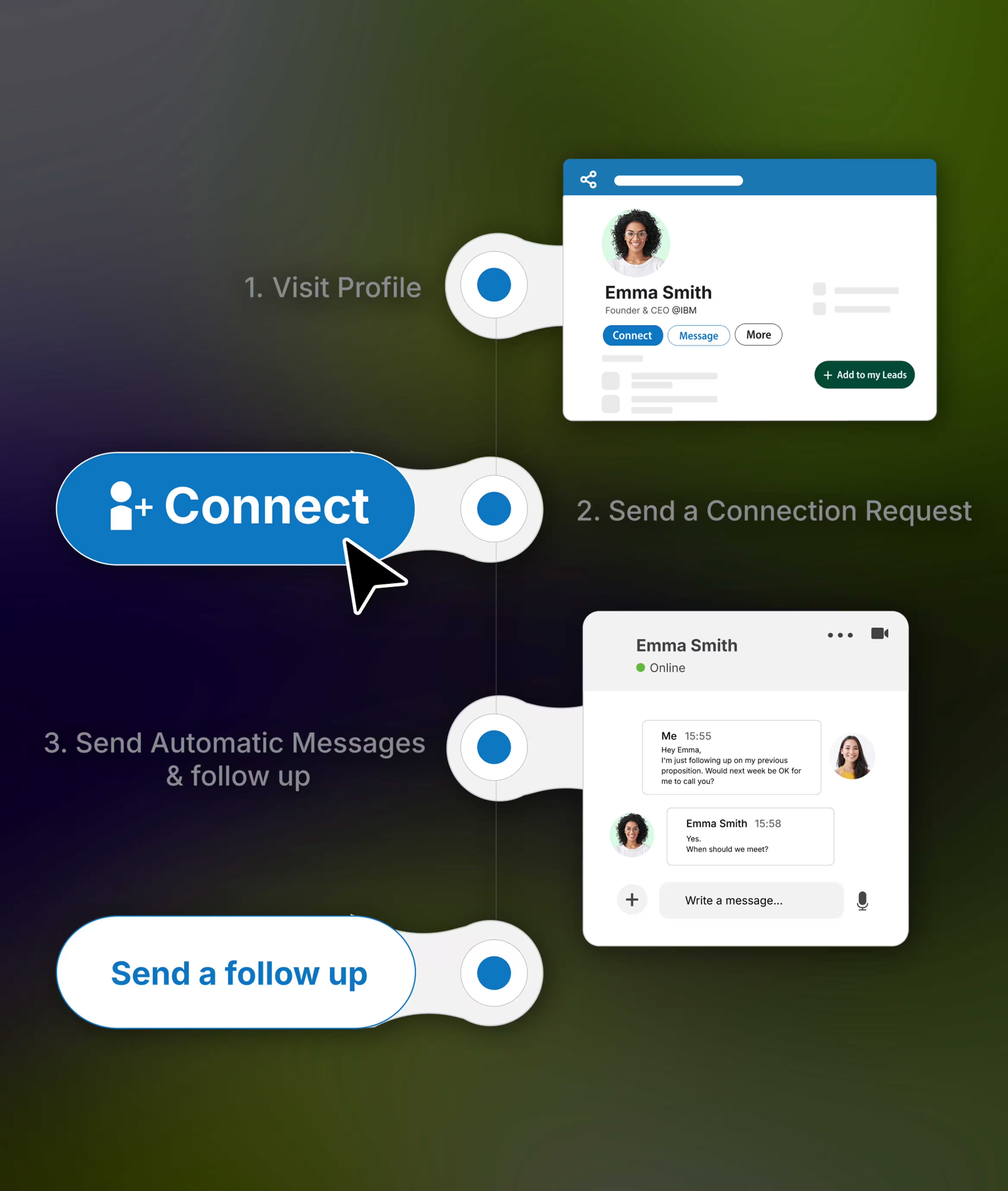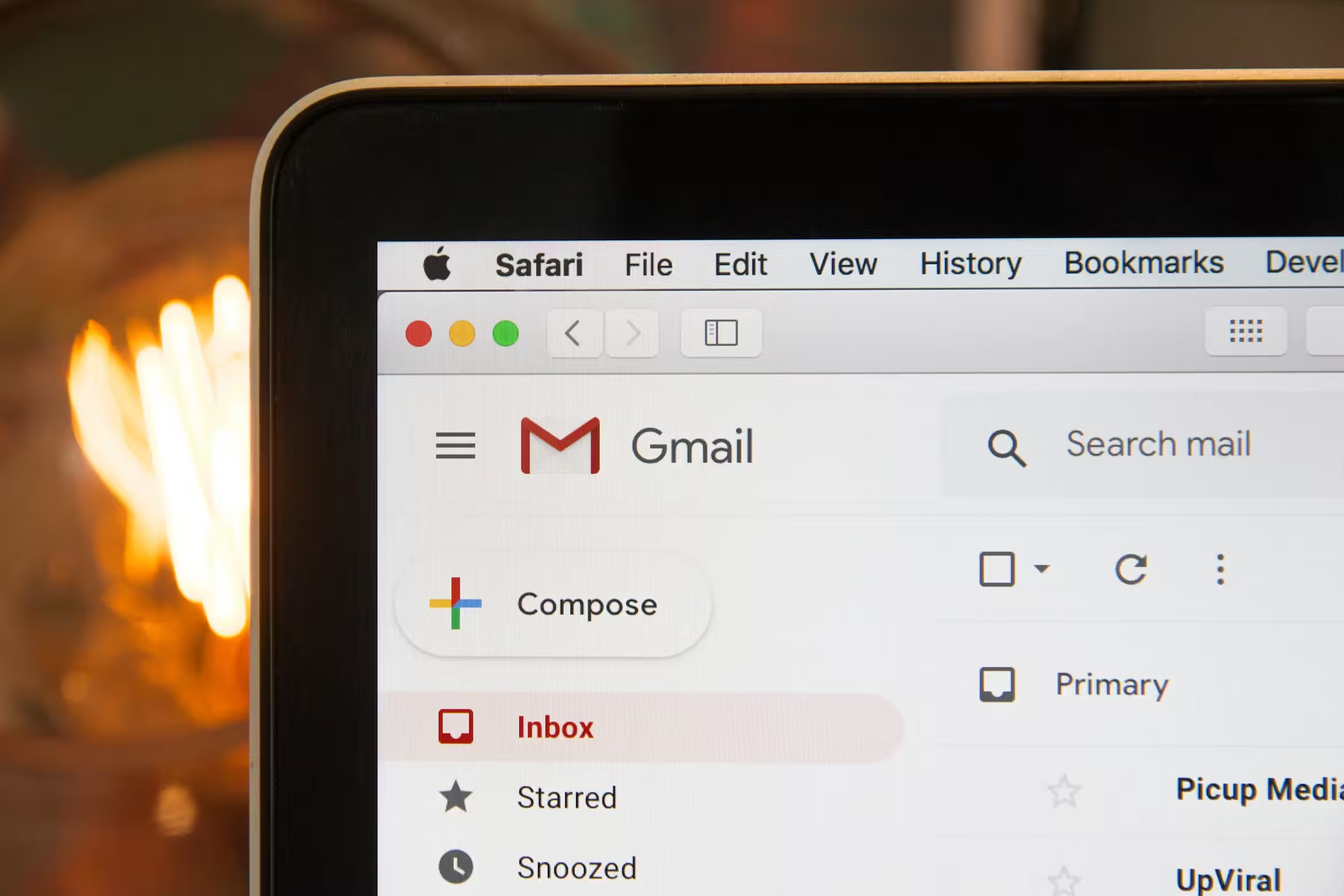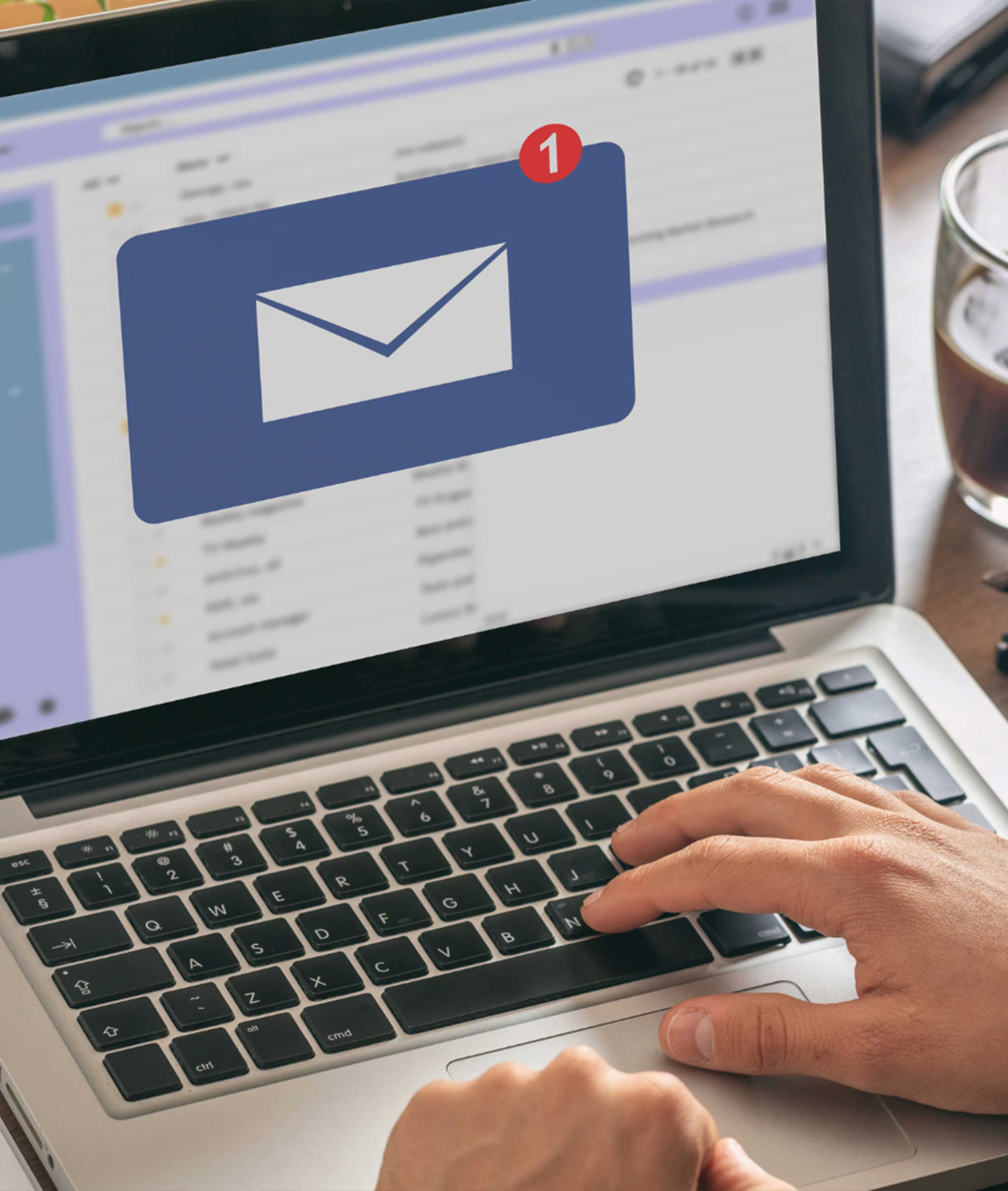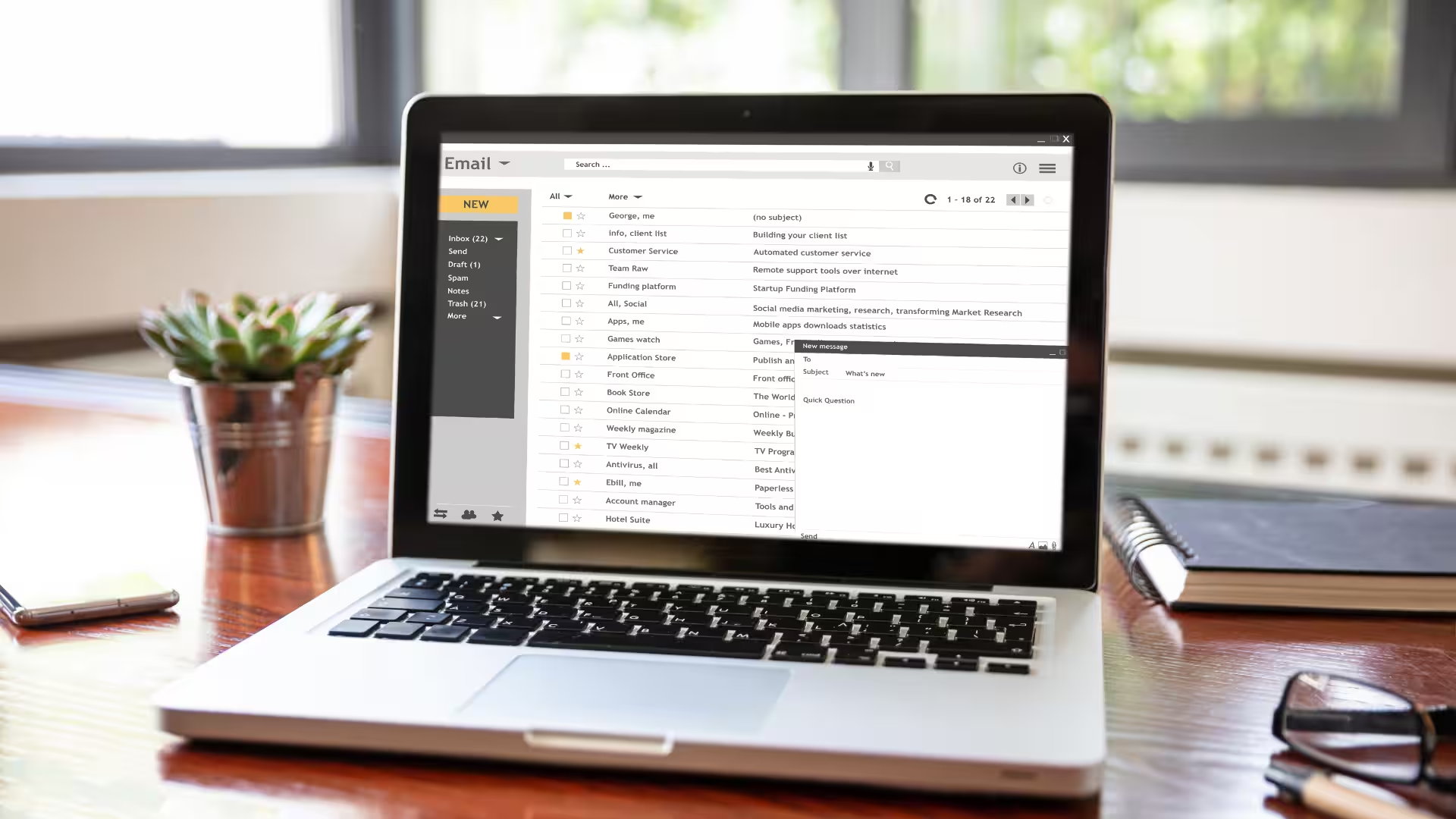If you're leading a sales team, you already know LinkedIn is one of the most powerful platforms for B2B outreach, prospecting, and building connections that lead to real business outcomes. But it’s also where reps lose hours doing repetitive work that doesn’t scale.
Manual outreach, missed follow-ups, and no visibility into reply rates or lead generation metrics. It’s inefficient, and it slows down sales development when every day counts.
Reps aren’t short on tools, they’re short on time. Most already use LinkedIn to find prospects, check titles, visit profiles, and send connection requests, through Sales Navigator for example. While LinkedIn Recruiter or Sales Navigator help find profiles, they weren’t built for automation, leaving reps stuck manually switching tabs instead of running a smart, connected flow.
But with no unified workflow, all these tools just add to the noise. Without a clear process, it turns into tab-switching chaos: open profiles, jump between accounts, copy-paste a message, forget the follow-up. Multiply that by 30 contacts a day, and you’ve got hours lost without a single booked meeting.
That’s where LinkedIn automation earns its place: it’s not about emailing hundreds of people on autopilot, but delivering the same high-quality motion across your team. When sequences are smart and personalized, you can track every reply, view, and touch, boosting reach while keeping your data clean. For inspiration on structuring your automated outreach, you can also look at concrete examples of automated LinkedIn messages.
Whether you’re running outbound solo or managing reps across multiple markets, LinkedIn automation gives you a way to scale without slipping. Clean sequences. No dropped leads. Messaging that lands where it counts.
This guide is built for you. We’ll walk through what actually works: from tool selection to campaign strategy, compliance tips, and how software like ZELIQ lets your team go faster, while staying in control.
What is LinkedIn automation?
What does LinkedIn automation actually mean?
It’s essential to understand this before diving into tools and advanced tactics.
By definition, LinkedIn automation is a campaign-level strategy that streamlines messaging and follow-ups to help teams manage outreach smarter, not harder. LinkedIn automation has become core to modern outbound. When used strategically, it turns high-effort prospecting into repeatable, scalable engagement that increases conversion rates and frees up reps to focus on high-impact conversations.
It’s more than just saving time, it’s about building a predictable system for pipeline generation. By setting up smart sequences and automated touchpoints, you ensure every prospect gets a consistent, timely message that reflects your positioning.
In practice, it means your sales and marketing teams can run multiple campaigns simultaneously, targeting different buyer personas, industries, or geographies, without compromising personalization.
Instead of switching between LinkedIn tabs, spreadsheets, and CRMs, users can manage everything from a single platform, like ZELIQ. You gain full visibility into who’s been contacted, which messages are landing, and where leads are in the funnel.
Done right, LinkedIn automation helps you build trust faster. The experience feels personal to the recipient, not robotic, and that’s what makes your outreach stand out in crowded markets.
%3Aformat(webp).webp)
LinkedIn automation explained
LinkedIn automation refers to using software to handle repetitive tasks, like:
- Sending connection requests
- Follow-up messages
- Profile visits
- Engaging with content automatically, without manual effort from the rep
Tools like ZELIQ offer integrated campaign dashboards, CRM integrations, and advanced automation capabilities, so users can expand their audience reach, trigger sequences automatically, and track performance seamlessly.
Done right, LinkedIn automation tools help SDRs, marketers, and founders scale their outreach while keeping messaging relevant and context-aware. Over the past few years, we've seen a shift from risky browser-based hacks (extensions or basic Chrome add-ons) to trusted, cloud-based tools with anti-detection safeguards and server-side automation features.
When you automate correctly, you can create drip sequences that send targeted content at the right time, automatically initiating follow-ups or sprinkling value-add touches like links to a video or a downloadable asset. This kind of automation enhances lead generation and boosts engagement rates.
These tools bring structure, consistency, and measurable insights to your social selling efforts:
- You free up reps from copy-pasting messages all day.
- You keep workflows centralized and synced with CRM.
- You can test, iterate, and improve your outreach over time.
- You can ramp campaigns in multiple markets without ever switching tabs or manual syncing.
- You build consistency across messaging, follow-ups, and lead handling.
Smart automation doesn’t replace humans. It removes friction so humans can show up where it counts.
%3Aformat(webp).webp)
What this looks like in practice
In real life, this means your sales and marketing teams can run several LinkedIn campaigns at once, each one tailored to a different audience, industry, or region.
And they can do it without losing that sense of relevance that makes people actually respond.
No more jumping between tabs, pasting messages, or trying to remember who replied last week. With a unified platform like ZELIQ, everything’s in one place. You see who’s been contacted, which messages are performing, and where each lead stands in your funnel. You also gain access to a clear panel of activity metrics: connection acceptance, message views, reply rates, helping you identify what’s working and what needs refinement.
When the setup’s right, automation doesn’t feel like automation. To the prospect, it reads as a thoughtful, well-timed message. And that’s what earns attention, especially when everyone else is cutting corners.
Before vs After: the impact of LinkedIn automation
The shift from manual LinkedIn prospecting to automation is about consistency, accuracy, and scale.
This table shows how structured automation transforms every stage of your daily outreach workflow.
%3Aformat(webp).webp)
Practical examples of LinkedIn automation
Let’s look at real-world examples of how top-performing sales teams use LinkedIn automation platforms to run effective campaigns across multiple accounts.
- Prospecting: A BDR launches an automated outreach campaign that visits profiles, waits 24 hours, sends a personalized connection request, and delivers a tailored message to the lead once accepted.
- Lead nurturing: If there’s no reply within 7 days, the platform automatically sends helpful content, like a case study or a thoughtful comment, to boost engagement and track follow-up metrics.
- Reactivating cold connections: Sales teams use filters to find connections from their past history, typically users who never booked a meeting, and re-engage them with a new campaign, often seeing improved performance on the second touchpoint.
- Follow-ups: After a call or inbound form, a rep automatically follows the contact and sends a message recap deux days later, keeping everything synced with the CRM.
These flows let you automate LinkedIn messages to warm leads without losing personalization or timing precision. They also help sales reps reach back out to clients who've received value before but didn’t convert yet, unlocking new potential from old conversations.
Imagine this: you’re running a dozen LinkedIn campaigns in parallel. To your prospects, it feels like one continuous, personalized journey, from a casual profile visit to a value-packed follow-up message. That’s the kind of experience that stands out, strengthens your brand, and lifts reply rates.
When done right, LinkedIn automation lets you auto-sync replies to your CRM, trigger follow-ups based on engagement, and keep every touchpoint aligned. It’s not about volume. It’s about building trust at scale, by reaching the right people, at the right time, with the right message.
What LinkedIn actions can be automated?
Not everything on LinkedIn should be automated. But the right actions, at the right time, can multiply your output. When done right, these automated actions can drive engagement while freeing up your sales reps to focus on closing:
- Connection requests: Custom first-line text to make your outreach feel personal. These requests are often your first impression, so make them count.
"Noticed you're scaling your GTM team, curious how you're handling outbound?"
- Follow-up messages / InMail: Use context-aware drip sequences to engage after connection, with delays based on replies or no-shows.
"Hi [First Name],
Just following up on my earlier note, totally get that timing
can be tight.
If outbound tooling is still on your radar, happy to share a quick
playbook that's working well for similar teams"
- Profile visits and follows: These light-touch signals improve visibility and warm up cold prospects.
- Engagement signals: Auto-like posts, leave comments, or share company content to show up authentically (depending on the tool).
Used properly, these actions automate LinkedIn outreach in ways that feel personal, relevant, and safe. Keep in mind: LinkedIn enforces strict limits. Sending 500 messages a day is a clear red flag.
Most LinkedIn automation software mimics human behavior by spreading actions over different time zones, devices, and days.
What are the best LinkedIn automation tools in 2025?
There are two categories of tools. One is safe. The other… not so much.
Cloud-based (recommended):
- ZELIQ: Multichannel native orchestration (LinkedIn + email), real-time CRM sync, sequence logic. One of the most innovative apps for revenue teams looking to scale without sacrificing compliance.
- Expandi: Focused on LinkedIn alone, with advanced personalization and A/B testing.
- LaGrowthMachine: Workflow-focused tool with team collaboration features.
Browser-based (use at your own risk):
- Dux-Soup: Chrome plugin that automates basic visits and connections.
- Meet Alfred: Supports messaging and follow-ups, but still exposes your session.
When looking for top LinkedIn automation tools, opt for cloud-based LinkedIn automation platforms with smart behavior logic, IP rotation, and CRM connectivity. The best tools support a wide range of outreach styles, from direct prospecting to nurturing sequences.
%3Aformat(webp).webp)
How to automate LinkedIn outreach effectively
You can automate outreach on LinkedIn while staying personalized and compliant.
Step-by-step outreach setup
%3Aformat(webp).webp)
The key to impactful automation is smart setup. But to get results, you need to start with a clean process, one that’s focused on timing, targeting, and relevance. Follow this workflow using a LinkedIn automation tool setup that drives precision over volume:
- Import enriched lead list: Start with clean, verified data: firmographics, titles, LinkedIn URLs. For example, ZELIQ natively enriches leads and filters by role, industry, and intent signals.
- Segment by ICP match: Prioritize outreach by tier (Tier 1 = perfect ICP, Tier 2 = partial match). Avoid grouping C-level execs and junior marketers into the same sequence.
- Map multichannel steps: Define touchpoints across LinkedIn, email, and CRM, with behavior-based triggers. Think: “If no response on LinkedIn → email on Day 3.”
This structure ensures your outreach is targeted, sequenced, and responsive.
Personalization at scale
Automation doesn’t mean sacrificing personalization. It’s about inserting relevance where it matters most.
Use merge fields:
“Hi {first_name}, saw you lead {company}'s GTM strategy…”
This feels tailored, even at scale.
Dynamic inserts: reference job role (“As a {job_title}, you’re likely scaling a team...”) or recent activity (“Your latest post on outbound caught my eye…”).
Ditch templates: nobody replies to:
“Hey there, saw your profile, let’s connect.”
Instead, lead with value:
“I work with SaaS teams scaling outbound, curious how you’re managing prospect data?”
The goal is resonance, not just reach.
Examples of LinkedIn messages that actually work
%3Aformat(webp).webp)
If you’re looking for copy ideas, you can draw inspiration from proven automated LinkedIn message examples that show what resonates with prospects.
Multichannel outreach with ZELIQ
True automation is about creating one unified experience across touchpoints. For reps and prospects alike, ZELIQ blends LinkedIn, cold email, and CRM updates into a single, cohesive motion that keeps your main outreach channels fully connected.
- LinkedIn + Email + CRM logging: ZELIQ syncs every interaction across platforms. To your prospect, it doesn’t feel like trois separate channels, just one consistent, contextual conversation.
- Backup outreach logic: No response on LinkedIn after three days? ZELIQ automatically follows up via email with a fresh CTA, keeping the flow alive without extra manual steps.
- Intent scoring + activity tracking: Every contact, click, view, and reply feeds into ZELIQ’s scoring engine. It updates lead scores in real time and syncs them directly into your CRM. No copy-paste, no delays.
It’s more than automation. It’s intelligent orchestration that lets your team move faster and stay aligned.
Campaign design best practices
A good campaign balances timing, relevance, and response sensitivity. Here's a proven sequence structure used by top-performing sales teams:
- Day 1: Profile visit + connect
- Day 2: Message with soft ask
- Day 4: Follow-up with value add
- Day 7: Escalate to email (if no reply)
To avoid over-sending, your automation should include smart reply logic. As soon as a prospect responds positively (“Yes, tell me more”), the sequence stops automatically et le rep est notifié pour un suivi manuel.
Keep your calls-to-action simple and low-pressure. Here are a few examples that work well:
- “Open to exploring?”
- “Worth a quick chat this week?”
- “Curious to hear your take on outbound orchestration.”
These LinkedIn outreach strategies help teams engage leads meaningfully, without overwhelming them. And they are easy to replicate inside ZELIQ, with prebuilt templates for every prospecting style.
How to use LinkedIn automation tools (safely)
LinkedIn is a goldmine for prospecting, but it’s also heavily guarded. The truth is, modern sales leaders don’t just chase leads, they build systems. When your team is still manually switching tabs, sending cold outreach one by one, or guessing the next step, you’re not just losing time. You’re losing visibility, consistency, and pipeline momentum.
With the right LinkedIn automation platform, reps can trigger personalized messages automatically, sync replies in real time, and keep every lead moving forward without the chaos. Smart automation doesn’t mean flooding inboxes. It means sending context-rich messages to the right people, at the right time, and turning cold clicks into a real pipeline.
Automation done wrong can trigger bans, limit reach, or tarnish your brand. The key is knowing how to automate without detection, while keeping messaging human and respecting privacy safeguards along the way.
The right automation software balances efficiency with compliance.
LinkedIn automation safety 101
Before scaling your outreach, make sure your setup mimics human behavior. For example, ZELIQ’s infrastructure is built for compliance. Here’s how to stay safe:
- Respect daily limits: LinkedIn caps new connection requests, and these vary by profile age and activity. ZELIQ dynamically adjusts volumes to stay compliant.
- Warm up new accounts: Don’t launch a full sequence on day one. Build trust by gradually increasing activity: 5 connections on Day 1, 10 on Day 3, and so on. Always warm up your LinkedIn account before launching full sequences.
- Randomize patterns: Use smart scheduling to vary message times and rotate templates. No deux prospects should see identical messages at 8:01 AM every day. Randomization is not a nice-to-have, it’s a core safety feature that separates smart automation from spam.
- Avoid browser-based tools: Chrome extensions may seem convenient, but LinkedIn detects them more easily. These tools often run directement inside your session, exposing votre compte to unnecessary risk.
Automation isn’t invisible. Smart automation is undetectable.
Best practices to stay compliant
Here’s ce que vous devez savoir about LinkedIn automation safety before launching any campaign.
- Use cloud-based platforms with anti-detection safeguards: Tools like ZELIQ use IP rotation, encrypted routing, and human-like pacing to fly under LinkedIn’s radar.
- Avoid mass-blast templates: Replace “Hi there, saw your profile” with micro-personalized lines: “Noticed your team’s been growing, curious how you’re approaching outbound?”
- Set auto-pause rules: Automatically halt sequences if someone replies, visits your profile, or if their status changes. ZELIQ triggers workflow stops based on behavior.
Tools that build in compliance features give your team freedom without risk.
But safety alone won’t save you from poor outreach. Even the best automation software can’t fix bad messaging. Hyper-personalization isn’t optional, it’s your safety net. Your outreach should look like a rep sent it, not a bot.
One of the top LinkedIn automation concerns is maintaining personalization at scale.
What are the risks of LinkedIn automation?
Let’s break down the most common LinkedIn automation risks and how to avoid them. Understanding the dangers of LinkedIn automation is key to long-term success.
- Violation of LinkedIn’s Terms: LinkedIn prohibits scraping, bulk messaging, or anything that mimics “unnatural” behavior.
- Account bans and shadow bans: Overuse or detectable patterns may lead to warnings, temporary lockouts, or worse, ghosting from search results.
- Brand reputation risks: Repetitive, impersonal messages make your brand look spammy and burn bridges fast.
Use ZELIQ’s safety-first architecture. It adapts per profile, rotates digital fingerprints, and monitors thresholds, so your team can scale without fear.
How to generate leads with LinkedIn automation
Manual prospecting doesn't scale. Good automation turns LinkedIn into a steady engine of qualified lead generation. Think of it as a smart outreach hack, from data enrichment to booked meetings, here’s how to do it avec précision.
Real-world lead generation workflows
These workflows show how automation can drive real pipelines. For example, here’s how high-performing sales teams use ZELIQ to automate the full lead lifecycle without losing the personal touch:
- Enrich and qualify leads: Pull contacts with technographic, firmographic, and intent data. ZELIQ scores leads based on ICP fit and engagement signals.
- Sync with CRM: Auto-log LinkedIn touchpoints, messages, and replies directly into Salesforce, HubSpot, or your native CRM.
- Assign to reps: Hot leads are automatically routed to reps, based on territory, persona expertise, or sequence performance.
- Personalize and send messages: Dynamic fields inject role-specific pain points, recent activity, or shared connections into each message.
- Track replies, requests, and book meetings: ZELIQ monitors replies, books directly into calendars, and flags leads for immediate Account Executive handoff.
%3Aformat(webp).webp)
This LinkedIn automation lead generation strategy helps teams convert signals into pipelines.
One of ZELIQ’s top-performing SDRs, Valentin, ran a multichannel outreach sequence combining LinkedIn and email. The results speak for themselves: 55% email open rate, 30% email response rate, 40% LinkedIn connection acceptance, and a 20% conversion rate from cold to booked meeting. These are exceptional results, and they didn't happen by chance.
Note: this wasn’t a mass send, it was orchestrated outreach powered by smart segmentation, intent signals, and contextual messaging.
With powerful LinkedIn lead generation tools like ZELIQ, you can go from raw data to booked meetings, at scale.
Now let’s zoom into the strategies behind LinkedIn automation for lead generation, and what separates smart flows from spammy outreach.
LinkedIn automation for lead generation
Automation is about orchestrating intent-based flows that move leads toward pipeline.
For example, if a prospect visits your profile or engages with one of your posts, ZELIQ can automatically trigger a follow-up sequence.
You can aussi segment your outreach based on growth signals, targeting leads from companies that recently raised funding, launched hiring sprees, or expanded departments.
Additionally, by applying profile tags like “Engaged but no reply” or “Viewed case study,” you can organize contacts into smart nurturing cadences and ensure the right message reaches the right person at the right time.
Integrating with sales workflows
Lead generation is only valuable if it connects cleanly to your sales process. With ZELIQ, every LinkedIn interaction becomes actionable pipeline data:
- Sync all outreach to your pipeline view: See who was contacted, who replied, and what stage they’re in, all in one place.
- Auto-score based on engagement: Opens, clicks, profile views, requests, and replies all feed into ZELIQ’s scoring engine.
- Instant Account Executive handoff: Leads that hit a reply threshold or book time auto-notify AEs for immediate follow-up.
Seamless integration ensures that automation fuels revenue.
%3Aformat(webp).webp)
What features should LinkedIn automation tools include?
Not all automation tools are created equal. If you're serious about scaling your outreach without compromising personalization or compliance, your LinkedIn automation platform must offer a full revenue-enablement suite.
The right tool doesn’t just help you book more meetings, it gives you back hours of productivity each week by eliminating repetitive tasks that drain your focus minute after minute.
Let’s look at the key features of LinkedIn automation tools that drive compliant, scalable outreach. Use this checklist to make an informed décision before committing to a new LinkedIn automation tool.
%3Aformat(webp).webp)
What top tools like ZELIQ offer
Top-tier platforms go beyond automation. They let you easily manage strategy, execution, and analytics from one performance engine. Here's what tools like ZELIQ deliver:
- All-in-one dashboard: View every sequence, contact, touchpoint, and status in one place.
- Sales-approved outreach templates: Proven message frameworks for first touch, follow-ups, and call-to-action variations.
- Lead enrichment and sequencing: Pull firmographic and intent data, score leads, then enroll in personalized LinkedIn and email flows.
- Auto-sync with CRM, no Zapier needed: Real-time pipeline updates, rep activity tracking, and lead stage tagging, natively integrated.
When evaluating platforms, don’t settle for basic outreach, choose one that delivers all the key features of LinkedIn automation tools in a single ecosystem.
How to choose the right LinkedIn automation tool
Your tool should align with your team’s size, motion, revenue goals, and help you save time at every stage of outreach.
Choosing based on team size and goals
Your prospecting velocity and team structure should guide your tool selection.
%3Aformat(webp).webp)
Also consider pricing transparency, some tools charge per user, others per campaign volume. Make sure the pricing model scales with your usage.
Key questions to ask before you buy
Before choosing a LinkedIn automation tool, it’s worth slowing down and asking the right questions. Not every platform fits every team, and the wrong setup can create more hassle than help. From account safety to campaign flexibility, here’s what to keep in mind:
- Is the tool cloud-based and safe for LinkedIn?
If the platform runs through a browser plugin or Chrome extension, that’s un red flag. LinkedIn’s detection systems are strict, and non-compliant tools can put your account at risk.
→ Look for cloud-hosted solutions that integrate natively with LinkedIn and simulate human behavior across devices and time zones. It’s the foundation of any safe LinkedIn automation setup. - Can it manage multichannel outreach natively?
Switching between tools for LinkedIn, email, and CRM updates slows down your team and increases friction.
→ A strong automation platform should orchestrate LinkedIn messaging, cold emails, and CRM syncing from one streamlined interface. The more connected your channels, the better your conversion rates and customer experience. - Does it support personalization at scale?
Drip campaigns are easy to set up. But real results come from smart features like dynamic fields, reply tracking, and branching logic.
→ If your outreach tool can’t adapt to user behavior or adjust sequences based on prospect engagement, you're stuck in broadcast mode. You want automation that feels authentic, not automated. - Are advanced insights built into the dashboard?
Campaigns don’t improve unless you can measure what works.
→ Ask if the tool offers real-time dashboards, response rate tracking, and audience scoring. That’s how you build smarter sequences and optimize over time. - Can the platform scale with your team and goals?
You might start solo, mais la croissance vient vite, with new reps, new segments, and new ICPs.
→ The tool should make it easy to duplicate top-performing campaigns, manage team-wide templates, and monitor performance across multiple LinkedIn accounts. Bonus points if it includes territory rules or auto-assigns contacts based on user roles.
Pro tip:
Don’t just look at pricing tiers or standout features. Test the workflow. Ask for a one-day free trial, run a few sequences, and see how easily your reps can set, launch, and manage campaigns. LinkedIn automation only works if it actually fits into your business process.
Why ZELIQ stands out
ZELIQ isn’t a one-trick tool, it’s an automation engine built for modern sales execution:
- Designed for sales-led organizations, from SMB to enterprise SDR/AE teams.
- Combines enrichment, sequencing, CRM sync, and analytics in one unified interface.
- Allows for hyper-personalized LinkedIn outreach plus fallback to email, without extra plugins or hacks.
- Built-in compliance controls: pacing, IP rotation, reply-triggered pauses.
Whether you’re scaling a team or consolidating tools, choosing a future-proof platform est clé. An all-in-one solution like ZELIQ is the most future-proof choice.
%3Aformat(webp).webp)
Conclusion
Your reps weren’t hired to copy-paste intros and guess who to follow up with. They’re here to open pipelines, drive conversations, and close deals.
That’s only possible if their workflows are focused, measurable, and built to scale. For growing businesses, having a complete and easy-to-manage system is no longer a bonus, it’s the baseline. LinkedIn automation enhances your outbound motion by making every request count, every message trackable, and every campaign easier to manage at scale.
LinkedIn automation, done right, gives your team that edge. Instead of chasing random prospects every month, your team can easily focus on qualified contacts and automate what slows them down, without losing control or sounding robotic. Platforms like ZELIQ remove the typical friction: data scattered across tools, clunky CRM syncs, and risky browser plugins that get you flagged.
Book a demo with ZELIQ and discover how top-performing sales teams streamline LinkedIn outreach, without sacrificing personalization or compliance. ZELIQ offers a premium experience built for real teams: fast setup, deep integrations, and smart automation that adapts to your pipeline, not the other way around.
It’s time to rethink your stack. Less admin. More conversations. Faster deals. That’s what the right automation delivers.
Enter the future of lead gen
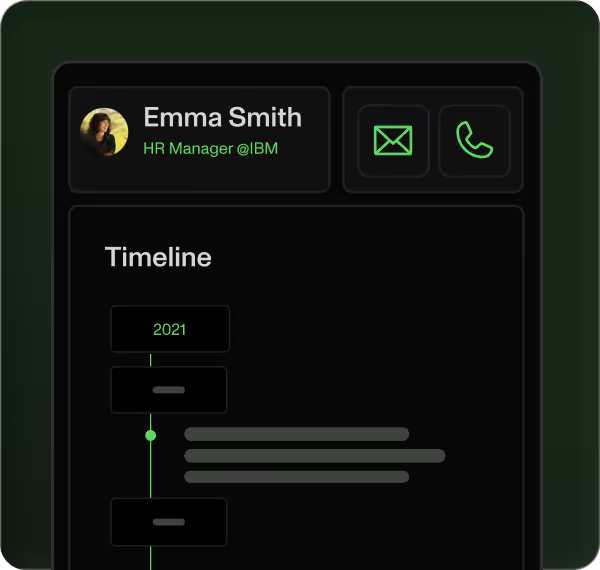
Table of contents
Placeholder Title
Table of contents
Placeholder Title
Placeholder Title
Download our full case study ebook!



